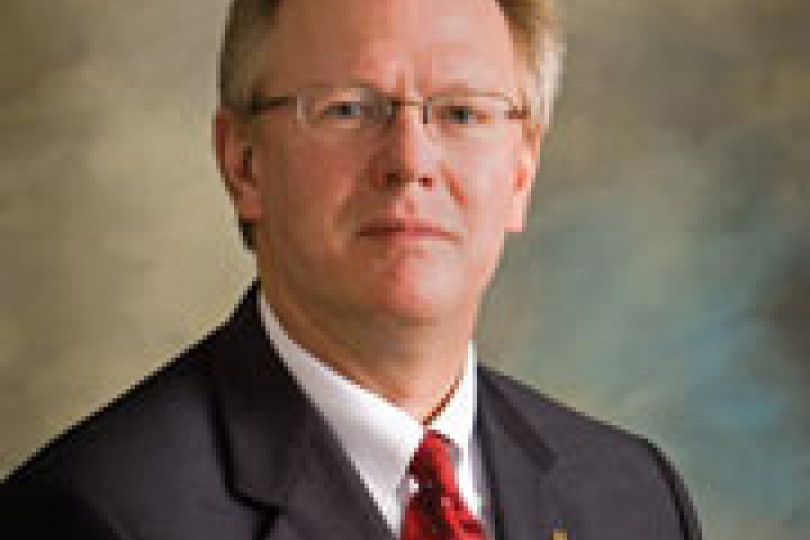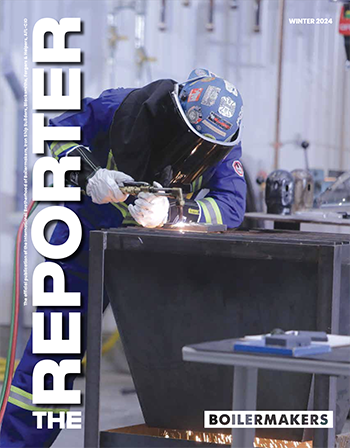Impact would be devastating for Boilermakers, nation
ON JUNE 2, THE EPA proposed new rules that will require existing coal-fired generation systems to cut carbon dioxide emissions by up to 30 percent by 2030, using 2005 emissions as a baseline. To achieve the reduction, the rules would allow states to adopt individual plans ranging from cap and trade to fuel switching to replacing coal-fired generation with renewables.
While the agency touts the “flexibility” of how states address its proposed rules, there is no mistaking the ultimate outcome — the dismantling of America’s coal-fired fleet.
The latest EPA rules are deeply disappointing to the Boilermakers union, our members and their families for three principal reasons, as explained below.
The wrong solution, the wrong direction
FIRST, WHILE THESE regulations may reduce U.S. carbon dioxide emissions in the energy sector, the reductions will have little, if any, impact on climate change. I say this because climate change is a world problem, and experts have consistently noted that both China and India will nullify our emission reductions with their own ongoing emission increases.
While no doubt the administration believes it is making an important contribution to slowing climate change, the facts argue otherwise:
- Nations of the world operate some 7,000 coal-fired power plants, the United States about 600 (and shrinking).
- China has eclipsed the United States as the nation with the highest carbon emissions, and India may soon surpass us as well.
- The rapid build-out of coal-fired plants continues globally. At the end of 2012, 1,200 new coal-fired plants were being proposed around the world, three-quarters of them in China and India.
There is evidence that efforts to cut coal-fired energy capacity in favor of renewables and natural gas are not making a material difference to global climate change.
International Energy Agency Director Maria van der Hoeven wrote last year, “Despite . . . a boom in renewable energy over the last decade, the average unit of energy is just as dirty as it was 20 years ago.”
Elizabeth Muller, executive director of the climate research group, Berkeley Earth, wrote, on April 12, 2013, “China’s greenhouse gas emissions are twice those of the United States and growing at 8 percent to 10 percent per year. By 2020 . . . China will emit greenhouse gases at four times the rate of the United States, and even if American emissions were to suddenly disappear tomorrow, world emissions would be back at the same level within four years as a result of China’s growth alone.”
The Obama administration contends that the U.S. must set an example for other countries to emulate in some way. The problem here is that most non-western nations with developing economies are so invested in coal-fired power generation systems that they cannot afford or will be unwilling to spend what it will take to shut down or quickly move away from their current coal-based technologies.
With no widely available, affordable carbon capture and storage (CCS) technology, nations with developing economies will continue to release millions of tons of CO2, whether or not they begin investments in other gas, nuclear or renewable technologies.
China’s coal-fired power generation systems, which continue to be built at a staggering pace, are mostly only a few years old. The Chinese will operate these systems for at least 40 more years. Decades of accelerated CO2 emissions from China, India and other nations can only be prevented if we just focus on what needs fixing today.
I agree that our country, our government should lead the world in this critical effort, but we should lead in the right direction. We should lead the world in a collaborative effort to develop affordable CCS technology that can be retrofitted on existing world coal- and gas-fired systems and that can be designed into new systems.
We must shift our focus to a collaborative, global investment in research and development in CCS technology. We must develop a technology that is affordable and effective.
We can still forge a path towards a world energy mix that includes “efficient” renewable energy systems, not just the mega-expensive feel-good ones we have been subsidizing with taxpayer resources. But our first priority should be dealing with the reality of world coal usage.
We need to focus on the immediate problem, the greater problem, and collaboratively invest in the development of affordable CCS technology that will cap emissions on our world’s current generation systems. This is the direction in which the United States should be leading the world.
All pain, no effective gain
SECOND, THE IMPACT of these regulations will be widespread and painful for those who work in and who support our coal-fired power generation systems.
From Boilermaker members and their families, to the multitude of other trade workers and their families, to communities and businesses that have prospered from the economic opportunities related to coal energy, to our rail and truck transportation systems, our mining industry, and more, the list of those impacted by oppressive EPA regulations is long. The devastation to those affected — for such little gain in climate change mitigation — will be enormous, costing, by some estimates, hundreds of thousands of good-paying jobs and other direct and indirect economic loss.
And these regulations will not just impact the jobs of Boilermakers and other crafts, they will negatively impact the pension programs many of our collective members have earned during years of hard, dangerous work.
Make no mistake about it, the pain will not end there. Look at the rising cost of energy in Spain and other European countries that embarked on aggressive programs to shift their energy systems to renewables. That’s where we are headed. As soon as coal no longer provides a fuel cost balance to other technologies in our energy portfolio, particularly natural gas, the average citizen, the average business will experience much higher electric bills.
The high risk to energy reliability
ONE OF THE biggest risks in dismantling our coal-fired energy fleet is a loss of reliability. Last winter’s harsh conditions stressed all forms of electricity production, particularly in the East and Midwest.
The CEO of one of the nation’s largest electric utilities, Nicholas Akins, told the Senate Energy Committee in April, “A month ago, I made headlines when I said 89 percent of the generation that AEP [American Electric Power] will be retiring in 2015 was called upon to meet electricity demand in January. That is a fact.”
Akins went on to say, “This country did not just dodge a bullet — we dodged a cannon ball.”
The message from CEO Akins is a warning that the forced and premature retirement of coal-fired power plants, accelerated by strict EPA regulations, could well lead to brownouts and blackouts when Americans are most vulnerable — during periods of extreme weather.
European nations that have shut down much of their coal-fired generation capacity and subsidized a wave of renewable systems are now facing energy shortages. In Germany, heavy industries were forced to temporarily shut down several years ago due to the stress of extreme weather on their power generation systems. Many in Europe are rethinking their approach to over-reliance on renewables. Germany, for example, has begun adding new coal-fired generation capacity.
Our government must learn from the hard lessons of Europe’s approach to controlling greenhouse gas emissions. The administration’s current energy policy is taking us down a similar path.
Our national energy policy must take into account the very real economic and social pain caused by plant closings, job loss, major spikes in electric bills, and the high risk of an unreliable power generation system. That policy must consider that shutting down our coal-fired generation fleet will have little impact on worldwide climate change as CO2 emissions accelerate in developing economies around the globe.
We must shift our focus to a collaborative, global investment in research and development in CCS technology. We must develop a technology that is affordable and effective so that every coal-fired (and gas-fired) electric plant in the world can capture and safely store its carbon emissions while continuing to provide affordable, reliable energy, as coal has done for more than 100 years.






